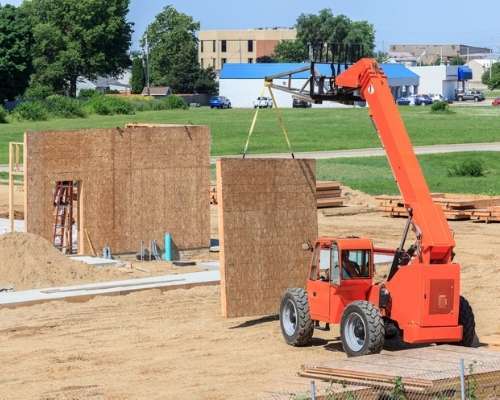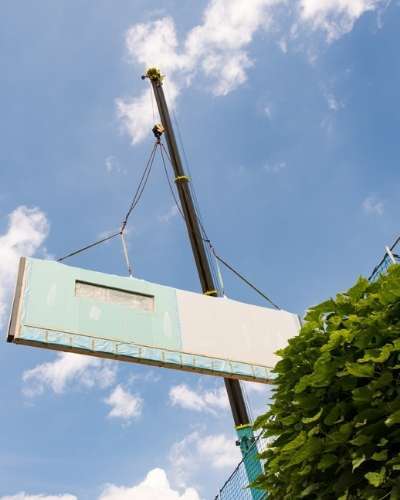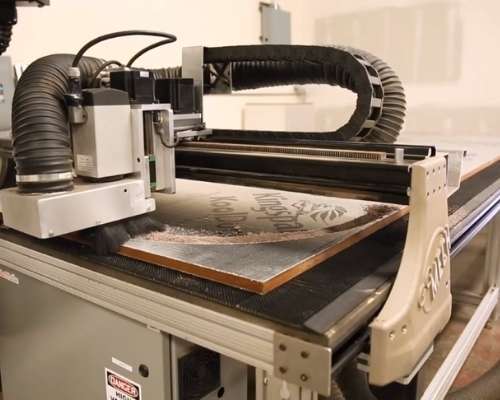6 Minute Read
March 11, 2021
0%

Modular construction, or offsite construction, is a method of construction that relies on the components being assembled in a factory under controlled conditions and then being finalised on-site. The initial process is also referred to as off-site manufacture for construction or OSM.
It's a practice that was lesser-used a decade ago, but has become more commonplace as housing shortages have taken hold in the U.S., UK, and many other regions. In fact, Yahoo Finance predicts that modular construction will have a global worth of around $155 billion by 2031, and could play a big role in creating affordable homes over that time.
Modular construction has many benefits for the environment, construction companies, and consumers. Modular construction saves time and money, as it can be made in a factory, and foundations are simultaneously performed on the assembly site and can save up to 25% in labor costs. There is no possibility of weather or geographical problems, as the modules are created in a controlled environment and can be easily transported to different locations relatively seamlessly. These advantages combined also result in a lower volume of waste, both during and after construction.
More and more contractors are implementing modular and prefabrication practices into their construction operations as there are a number of other benefits as well:

One advantage of offsite construction is that the time on site is minimised and therefore a project’s length can be reduced. If done correctly, this means subcontractors won’t have to wait around for another subcontractor to finish their tasks on the build. By their very nature, these builds are efficient, meticulously planned, and usually utilise modern technology to ensure there aren’t any delays once construction does begin on the final site.
Due to a larger proportion of the project being completed in a factory setting, it is less likely to be delayed due to adverse weather conditions — something all too common on UK building sites thanks to the great British weather. Although this is something often factored into construction insurance, it nevertheless causes a ripple effect of delays that can affect far beyond the root project.
According to UK organization The Waste and Resources Action Programme (WRAP), up to 67% less energy is required to produce a modular building compared to a traditionally built building from start to finish. Also, modular projects being completed quicker means energy usage is reduced at the project site.
WRAP also predicts up to a 90% reduction in materials can be achieved through the use of modular construction. By the nature of modular buildings, many can be disassembled and moved elsewhere at a future date. This means they’re durable, reusable and contribute to a cyclical method of construction that aims to minimise waste.
Anything that has human involvement is inevitably prone to mistakes — this can’t ever be completely eradicated. However, by reducing the amount of construction that is undertaken on-site, more of the checks can be carried out in a factory setting and therefore improve first-time quality on items.
When this is paired with a field productivity and quality tool, such as Viewpoint’s Field View solution, this culture of first-time quality and accountability can be easily carried through a project. Construction is changing dramatically, and the opportunity for contractors to work alongside technology could give them an exciting advantage when it comes to delivering repeatable quality for its customers and the end-users.
Modular construction tends to be mass-produced, which can lead to a limited variety of materials and options. Modular demands also have much higher amounts of complex decisions and typically utilize the front-loaded design process. Front-loaded design forces buyers and owners to make final decisions on appliances and furnishes before construction even begins, leaving little room for changes. The financial process has also proven to be quite tricky, as the faster timeline usually generates much larger bills earlier in the construction process.
Although modular construction is a type of prefabricated construction, modular construction, and prefab may have many similarities but are not the same process. Prefab is any construction process that does not take place on-site, while modular construction consists of modules being built in a factory and then being transferred and built on-site.

Modular construction can come in many forms and varieties, but the three most common are 2D panels, 3D modules, and hybrid modular construction.
2D panels are the most cost-effective, easy to transport, and most common type of modular construction in use today. If you’ve ever built a desk or shelf, you’ve partaken in 2D panelized modular construction. These projects can be finished or unfinished, furnished with windows and doors, and work well for open-concept spaces.
3D modules maximize productivity and typically only need to be connected to a pre-existing product before it can be deemed “finished”. As they are typically 80 to 95% complete when they leave the factories, 3D modules work well in more complex environments/rooms such as kitchens and bathrooms as add-ons.
Hybrid modular construction is the perfect combination of both 2D panels and 3D modules, with the flexibility of 2D panels, and the productivity of 3D modules. By using this type of modular construction, builders can cover a wide array of rooms and environments, and increase their possibilities.

In Portland, Oregon, the Hacienda Community Development Corporation (HCDC)—a nonprofit organization heading up a new housing project—called the Mass Casitas Project has taken to using modular homes to try to create more affordable housing. This project aims to create sustainable modular housing out of Oregon mass timber, reutilizing one of Oregon’s most abundant natural resources to solve one of the state’s most significant problems. With Oregon currently grappling with the third-highest rate of homelessness in the country and skyrocketing housing prices (made worse by recent wildfires), the Mass Casitas Project seeks to make a meaningful impact by harnessing the potential of modular housing. These modular homes will be available for workforce housing, home-challenged individuals, and those affected by wildfires.
This innovative approach—modular construction not only proves to be highly cost-effective but also significantly faster than traditional methods—enables swift responses to housing crises. If their prototype homes perform well, Mass Casitas could potentially produce two to five houses a day, a rate that would help reduce housing pressures far more quickly than traditional home building.
6 Minute Read
March 11, 2021
5 Minute Read
January 26, 2021
4 Minute Read
September 16, 2020